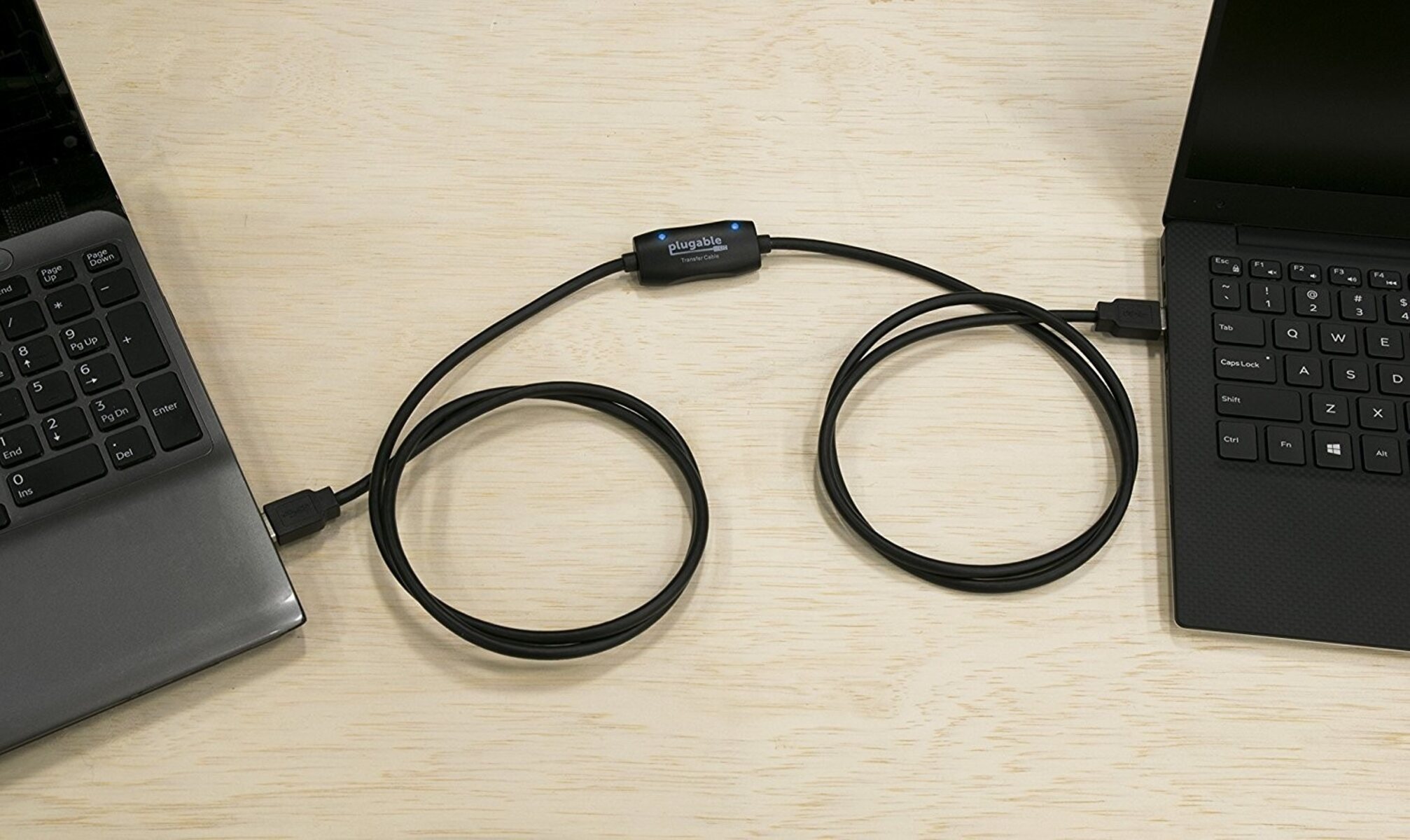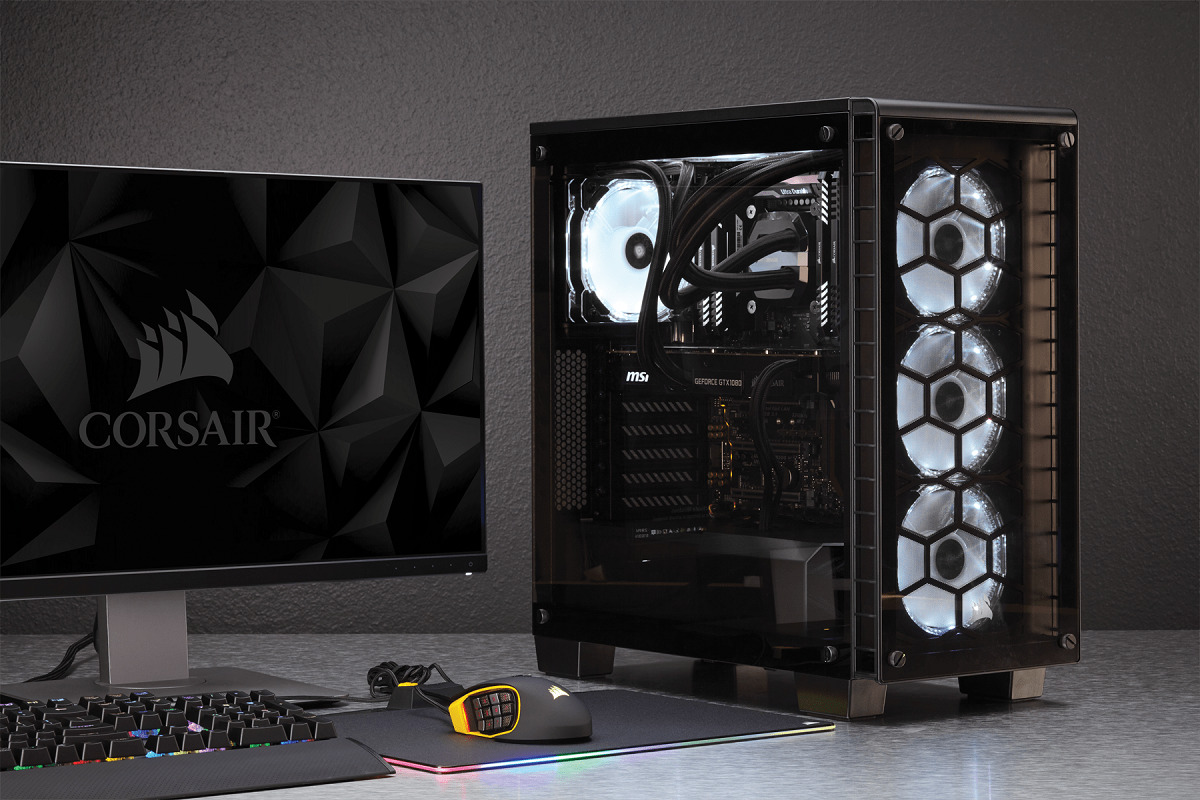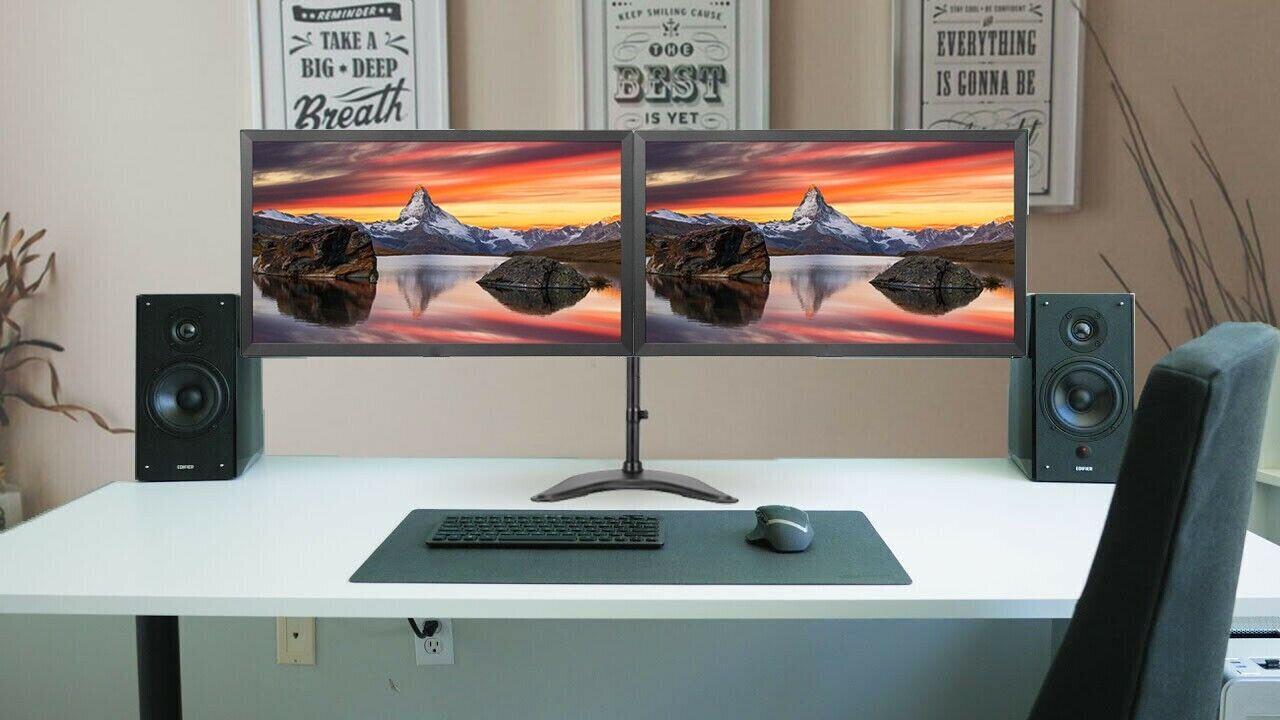Introduction
When it comes to connecting two workstations, having the right cable is essential for seamless communication and data transfer. The type of cable you need will depend on various factors, such as the distance between the workstations, the required bandwidth, and the networking technology you’re using. In this article, we will explore the different types of cables commonly used to connect workstations and discuss the factors to consider when choosing the right cable for your specific needs.
To establish a reliable and efficient connection between workstations, there are primarily three types of cables to consider: Ethernet cables, Coaxial cables, and Fiber Optic cables. Each of these cables has its own advantages and uses, offering different speeds, transmission distances, and level of interference resistance.
Ethernet cables are the most common choice for connecting workstations in a Local Area Network (LAN) or a Home Area Network (HAN). They provide a reliable and cost-effective solution for transferring data at high speeds. Coaxial cables, on the other hand, are often used for cable television connections but can also be employed for networking purposes. Lastly, Fiber Optic cables offer the fastest and most secure data transfer but are typically more expensive compared to the other two options.
When determining the type of cable needed to connect two workstations effectively, you must consider several factors. These include the distance between the workstations, the required bandwidth or speed, the level of interference in the environment, and the overall budget. By evaluating these factors, you can make an informed decision and select the cable type that best meets your requirements.
Now that we have introduced the topic of connecting workstations and the different cable options available, let’s dive deeper into each cable type, exploring their characteristics, advantages, and recommended usage scenarios. Whether you’re setting up a home office or a corporate network, understanding the different cable options will help you make the right choice and ensure smooth communication and data transfer between your workstations.
Ethernet Cable
Ethernet cables are the most common and widely used type of cables for connecting workstations in a Local Area Network (LAN) or a Home Area Network (HAN). These cables utilize twisted pair technology to transmit data signals over copper wires, offering reliable and high-speed connections.
There are several categories of Ethernet cables, including Cat5, Cat5e, Cat6, Cat6a, and Cat7. Each category provides different capabilities in terms of speed and bandwidth.
The Cat5 Ethernet cable is the most basic option, capable of transmitting data at speeds of up to 100 Mbps. It is suitable for simple home networks and basic internet connectivity.
The Cat5e Ethernet cable improves upon the Cat5 cable by introducing enhanced data transmission capabilities, offering speeds of up to 1 Gbps. It is the most commonly used Ethernet cable for typical home and small office networks.
For more demanding applications, the Cat6 Ethernet cable provides even higher data transfer speeds of up to 10 Gbps. It features improved interference resistance and is suitable for larger networks or installations requiring higher bandwidth.
The Cat6a Ethernet cable is an upgraded version of Cat6, supporting data speeds of up to 10 Gbps over longer distances. It incorporates additional shielding to minimize crosstalk and interference, making it ideal for commercial and industrial installations.
The latest and most advanced option is the Cat7 Ethernet cable, capable of transmitting data at speeds of up to 10 Gbps over 100 meters. It employs extensive shielding to reduce electromagnetic interference, resulting in even more reliable and secure connections.
When choosing an Ethernet cable, it is important to consider the speed requirements and the distance between the workstations. While Cat5e cables are sufficient for most home and small office setups, larger networks or applications requiring higher speeds may benefit from Cat6 or higher category cables.
It is worth noting that Ethernet cables are backward compatible, meaning you can use a higher category cable with a lower category device. However, the maximum speed will be limited to the capabilities of the lowest category component.
In summary, Ethernet cables are the go-to option for connecting workstations in a LAN or HAN. The various categories of Ethernet cables offer different speeds and capabilities, allowing you to choose the appropriate cable for your specific networking requirements.
Types of Ethernet Cables
There are several types of Ethernet cables available, each with different characteristics and capabilities. Let’s explore the most commonly used types:
- Cat5: Cat5 cables are the basic option for Ethernet networking. They can support data transfer speeds of up to 100 Mbps and are suitable for small home networks or basic internet connectivity.
- Cat5e: Cat5e cables, which stands for Cat5 enhanced, are an improvement over Cat5 cables. They can handle speeds of up to 1 Gbps and offer better resistance to crosstalk and interference. Cat5e cables are widely used for home and small office networks.
- Cat6: Cat6 cables are designed for higher bandwidth requirements. They support speeds of up to 10 Gbps and offer improved performance and reliability compared to Cat5e cables. Cat6 cables are ideal for larger networks or applications that demand faster data transfer.
- Cat6a: Cat6a cables, where “a” stands for augmented, are an enhanced version of Cat6 cables. They can support the same 10 Gbps speeds but over longer distances, up to 100 meters. Cat6a cables are commonly used in commercial and industrial installations.
- Cat7: Cat7 cables are the top-of-the-line option for Ethernet connections. They can reach speeds of up to 10 Gbps over 100 meters and offer the best resistance to interference thanks to their extensive shielding. Cat7 cables are typically used in data centers and high-performance networking environments.
It’s important to note that the higher the category of the Ethernet cable, the better its performance and capability to handle faster speeds and larger bandwidths. Therefore, when choosing an Ethernet cable, consider the specific requirements of your network and select the appropriate category accordingly.
In addition to the categories mentioned above, there are also shielded and unshielded Ethernet cables. Shielded cables, denoted with an “STP” or “FTP” designation, have an extra layer of shielding around each twisted pair to reduce electromagnetic interference. Unshielded cables, labeled as “UTP,” lack this additional shielding but still provide reliable performance for most networking setups.
Regardless of the Ethernet cable type you choose, it’s essential to ensure that it’s properly installed and terminated to maximize its performance. To maintain optimal network speeds and minimize potential issues, use high-quality cables and connectors, and follow industry best practices for installation.
In summary, there are various types of Ethernet cables available, each with different capabilities in terms of speed, bandwidth, and interference resistance. Consider the specific needs of your network to select the appropriate cable type and ensure reliable and efficient connectivity between your workstations.
Coaxial Cable
Coaxial cables are another type of cable commonly used for connecting workstations, especially for cable television connections. These cables have a central conductor, typically made of copper, surrounded by insulation and a metallic shield. The outermost layer is a protective coating called the jacket.
Coaxial cables are characterized by their ability to transmit high-frequency signals with minimal interference and signal loss. They are commonly used in broadcasting, telecommunications, and networking applications that require a reliable and robust connection.
One of the advantages of coaxial cables is their ability to carry a wide range of frequencies, making them suitable for both video and audio signals. They can handle both analog and digital signals, providing a versatile solution for various applications.
There are different types of coaxial cables available, each with varying capabilities:
- RG6: RG6 cables are commonly used in residential and commercial applications for cable television and internet connections. They offer great signal quality and can support higher frequencies.
- RG11: RG11 cables are thicker and have a lower signal loss compared to RG6 cables. They are primarily used for longer cable runs and in applications where low signal loss is critical.
- RG59: RG59 cables are often used for video surveillance systems and composite video connections. They are not as suitable for high-bandwidth or long-distance applications compared to RG6 or RG11 cables.
When choosing a coaxial cable, it is important to consider factors such as signal quality, distance, and the specific application requirements. It’s also worth noting that coaxial cables have different connectors, such as BNC (Bayonet Neill–Concelman) and F-type connectors, which should be compatible with the respective devices being connected.
Using high-quality coaxial cables and connectors, along with proper installation techniques, ensures the best signal transmission and minimizes the risk of interference or signal loss. This is particularly important when dealing with high-definition video signals or when connecting devices over long distances.
In summary, coaxial cables are a reliable solution for connecting workstations, particularly in scenarios involving cable television or broadcasting applications. They offer excellent signal quality and a wide frequency range, making them suitable for various audio and video transmission needs.
Fiber Optic Cable
Fiber optic cables are the pinnacle of modern networking technology, offering the fastest and most secure data transfer capabilities. These cables use thin strands of glass or plastic, called optical fibers, to transmit data as pulses of light.
One of the key advantages of fiber optic cables is their ability to transmit data over long distances without significant signal loss or degradation. They are capable of carrying large amounts of data at incredible speeds, making them ideal for high-bandwidth applications such as data centers, telecommunications networks, and long-distance connections.
Fiber optic cables provide several advantages over traditional copper cables. They have a much higher data transfer rate, with speeds ranging from hundreds of megabits per second to terabits per second. Fiber optic cables are also immune to electromagnetic interference (EMI) and radio frequency interference (RFI), ensuring clearer and more reliable transmissions.
There are different types of fiber optic cables to choose from, including single-mode and multi-mode cables:
- Single-mode fiber: Single-mode fiber optic cables have a smaller core diameter, allowing a single ray of light to travel down the center. They are ideal for long-distance connections and can transmit data over tens or hundreds of kilometers.
- Multi-mode fiber: Multi-mode fiber optic cables have a larger core diameter, allowing multiple rays of light to travel simultaneously. They are suitable for shorter distance connections, typically within buildings or campuses.
When choosing a fiber optic cable, it’s important to consider both the distance requirement and the bandwidth needs of the specific application. Single-mode fiber is more suitable for long-haul connections or applications that require higher bandwidth, while multi-mode fiber is typically used for shorter distances with lower bandwidth requirements.
It’s worth noting that fiber optic cables require specialized connectors, such as SC (Subscriber Connector), LC (Lucent Connector), or ST (Straight Tip) connectors, to ensure proper termination. These connectors are designed to maintain the precision necessary for reliable fiber optic connections.
While fiber optic cables offer exceptional performance, they can be more expensive compared to other cable types. Additionally, the installation and maintenance of fiber optic infrastructure may require specialized skills and equipment.
In summary, fiber optic cables provide the fastest and most secure data transfer capabilities, making them ideal for high-bandwidth and long-distance connections. By choosing the appropriate type of fiber optic cable and ensuring proper installation and maintenance, you can benefit from reliable and high-speed networking for your workstations.
Determining the Cable Type You Need
Choosing the right cable type to connect your workstations requires careful consideration of several factors. By taking these factors into account, you can ensure that you select a cable that meets your specific needs in terms of speed, distance, and performance.
Here are the key factors to consider when determining the cable type you need:
- Distance: The distance between the workstations plays a crucial role in selecting the appropriate cable. Different cable types have varying distance limitations. For example, Ethernet cables like Cat5e and Cat6 can reliably transmit data up to 100 meters, while fiber optic cables can cover much longer distances without significant signal loss.
- Bandwidth requirements: Consider the amount of data you need to transmit and the desired speed. Higher bandwidth applications, such as large file transfers or video streaming, may require cables capable of handling higher speeds like Cat6 or fiber optic cables.
- Interference: Take into account any potential sources of interference in your environment, such as electrical cables, machinery, or nearby wireless devices. Cables like fiber optic cables are immune to electromagnetic interference, making them ideal for environments with high interference levels.
- Budget: Your budget will also influence your decision. Copper-based Ethernet cables are generally more cost-effective compared to fiber optic cables, which are often more expensive due to their advanced technology and performance capabilities.
By evaluating these factors, you can determine the most suitable cable for your specific requirements.
It’s also essential to consider future scalability and flexibility. If you anticipate the need for higher speeds or increased bandwidth in the future, it may be wise to invest in a cable type that can accommodate those needs, such as Cat6 or fiber optic cables.
Additionally, consult with professionals or network specialists who can provide expert advice based on your specific network setup and requirements. They can assess your needs and recommend the most appropriate cable type for optimal performance.
In summary, determining the cable type you need involves considering factors such as distance, bandwidth requirements, interference levels, and budget. By carefully evaluating these factors and seeking expert advice when necessary, you can make an informed decision and select the cable that will provide reliable and efficient connectivity between your workstations.
Factors to Consider When Choosing a Cable
When it comes to choosing a cable to connect your workstations, there are several important factors that you should consider. These factors will help you make an informed decision and select a cable that meets your specific needs for speed, distance, reliability, and budget.
- Speed Requirement: Determine the speed at which you need to transfer data between your workstations. Higher bandwidth applications, such as video editing or data-intensive tasks, will require cables capable of handling faster speeds.
- Distance: Consider the distance between your workstations. Different cable types have limitations on the distance over which they can reliably transmit data without significant signal loss. Ensure that the cable you choose can cover the required distance.
- Interference Resistance: Assess the level of interference in your environment. If you are in a highly congested or noisy environment, such as an office with many electrical devices, consider cables that offer better resistance to interference, such as shielded Ethernet cables or fiber optic cables.
- Reliability: Think about the reliability required for your network. If you need a stable and secure connection, especially for critical applications or sensitive data transmission, consider cables that provide higher reliability, such as fiber optic cables that are immune to electromagnetic interference.
- Budget: Consider your budget. Different cable types have varying costs associated with them. Evaluate your requirements and budget constraints to find the most cost-effective option that meets your needs.
- Future Scalability: Consider the future growth and expansion of your network. If you anticipate increased data transfer needs or the addition of more workstations, choose cables that can support future scalability, allowing for higher speeds or bandwidth.
It’s also worth consulting with network specialists or professionals who can provide expert guidance. They can evaluate your specific network setup, analyze your requirements, and recommend the most suitable cable type for optimal performance.
By carefully considering these factors and seeking expert advice when needed, you can choose the right cable that ensures fast, reliable, and secure connectivity between your workstations, meeting both your current and future needs.
Conclusion
Choosing the right cable to connect workstations is crucial for achieving seamless communication and efficient data transfer. Ethernet cables, such as Cat5e, Cat6, and Cat7, are widely used for local area networks, providing reliable connections with varying speeds depending on the category. Coaxial cables are commonly used for cable television connections, while fiber optic cables offer the fastest and most secure data transfer for high-bandwidth applications.
When determining the cable type you need, consider factors such as distance, bandwidth requirements, interference levels, and budget. By evaluating these factors, you can select the most appropriate cable that meets your specific needs. Additionally, it’s important to consider future scalability and consult with professionals if necessary to ensure optimal performance.
Whether you’re setting up a home office or a complex network infrastructure, choosing the right cable is essential for establishing reliable and efficient connectivity between your workstations. By understanding the various cable options available and considering the factors that influence your decision, you can make an informed choice that maximizes performance and meets your networking requirements.
Investing in the right cable type ensures that your workstations can communicate effectively, supporting smooth data transfer and providing a solid foundation for your network infrastructure. Prioritize factors such as speed, distance, reliability, interference resistance, and budget, and select the cable type that best aligns with your specific needs.
Ultimately, by making a well-informed decision and selecting the appropriate cable type, you can ensure that your workstations are connected efficiently, enabling seamless communication, collaboration, and data transfer.

























